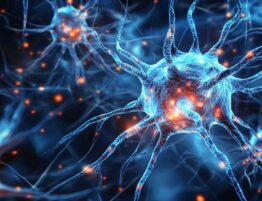A STEMI heart attack constitutes a critical medical emergency marked by the abrupt occlusion of a coronary artery. It leads to a disruption in the perfusion of the cardiac muscle. This condition is among the most extreme forms of myocardial infarction. It demands urgent medical care. Understanding the reasons and indications of this state is paramount. You have to recognize it early to facilitate prompt intervention.
In this complete guide, you’ll learn about all the intricacies of STEMI heart attacks. Read about their core mechanisms, risk factors, and clinical manifestations. We want to shed light on this critical cardiovascular condition. We aim to empower you to recognize signs and take timely action to mitigate possible life-endangering outcomes.
What is a STEMI Heart Attack?
Have you ever wondered, “What is a STEMI heart attack?” Understanding the different types of heart attacks is necessary. So you can recognize signs and pursue appropriate medical care.
This type of condition is clinically termed a myocardial infarction (MI). It happens when there is an obstruction in the blood flow for a prolonged time. It may result in impairment or demise of the cardiac muscle tissue. There are various kinds of these ailments. The most extreme one is a STEMI heart attack.
It manifests when one of the heart’s primary arteries experiences a total restraint. The typical cause is the breakage of a plaque within the artery. This blockage results in a substantial decrease or complete halt in the blood supply to a considerable segment of the heart.
It differs from other types. For instance, NSTEMI and unstable angina involve partial blockages or temporary flow reductions. We want to remind you that any of them require urgent clinical attention.
Explanation of STEMI Medical Abbreviation
In the realm of clinical terminology, abbreviations are used quite often. They succinctly communicate complex conditions. One such medical abbreviation is STEMI. It holds significant importance in the context of cardiac health. This one stands for ST-segment elevation myocardial infarction. This term encapsulates a particular category of cardiac event distinguished by a specific electrocardiogram finding. The high ST segment on the ECG is a hallmark sign of this condition.
Another thing we want to mention is the importance of differentiating between a stroke and a heart attack. Sometimes, people might mix up the abbreviations. Both these states involve acute vascular events. However, they affect different organs and have distinct underlying reasons and manifestations. While a heart attack primarily affects the heart, a stroke impacts the brain. The main cause is usually clots or bleeding in the brain’s vessels.
A stroke can result in sudden neurological deficits such as paralysis, speech impairment, or loss of vision. In contrast, a STEMI heart attack typically presents with chest aches, difficulty breathing, sickness, and more. We’ll discuss them in more detail below.
Causes of STEMI Heart Attacks
You need to know what can cause a STEMI heart attack. That way, you can take some proactive steps to preserve your soundness. Some of these risks are hard to predict. However, you can handle the others and reduce the possibility of getting this condition. Below, we gathered the predominant contributors.
Coronary Artery Disease
The most typical reason is CAD. It manifests as the buildup of fatty deposits in the coronary arteries. This blockage primarily consists of cholesterol, fat, and other substances. It leads to the constriction and eventual obstructions of the blood vessels. When it ruptures, it can trigger the development of a thrombus.
Atherosclerosis
It is the process of the buildup of arterial plaque. Over time, it can lead to their progressive narrowing. In rupture cases, the resultant clot can cause an acute blockage.
Smoking
Tobacco smoking is a significant risk factor for the development of coronary artery disease and subsequent STEMI heart attacks. The chemicals present in tobacco can compromise the integrity of the vessel’s endothelium. It facilitates blockage appearance and heightens the likelihood of rupture.
Hypertension
High blood pressure, or hypertension, exerts excessive force on the arterial walls. It contributes to the development of atherosclerosis and coronary artery disease. Chronically elevated BP can lead to structural changes in the arteries. Consequently, people with unchecked hypertension have a higher chance of encountering this condition.
Diabetes Mellitus
It is a metabolic disorder marked by elevated blood sugar levels. It can harm the vascular system across the entire body. People with diabetes have a higher prevalence of heart disorders. Moreover, diabetes can impair the function of the endothelium. It’s the inner lining of blood vessels.
Hyperlipidemia
High concentrations of cholesterol and triglycerides in the blood can also become the reason. Excess amounts can accumulate within the arterial walls, occluding and constricting the arteries. In cases of break, the release of cholesterol-rich debris can trigger the formation of a thrombus. All of this may result in a STEMI heart attack.
STEMI Heart Attack Symptoms
The next thing we want to discuss is STEMI heart attack symptoms. Recognizing them as quickly as possible is crucial to getting proper help. If you or someone you know experiences any of these signs, it is vital to get urgent attention instantly. So, here are the signs.
Chest Pain or Discomfort
One of the distinctive STEMI heart attack symptoms is chest ache or distress. Many people describe this sensation as compression or heaviness in that area. It may come on suddenly and persist for more than a few minutes. Also, it can potentially radiate to the arms, neck, jaw, dorsal region, or abdomen.
Difficulty Breathing
You may also feel short of breath, even at leisure or with low activity. This manifestation can occur due to the heart’s inability to pump effectively. It leads to inadequate oxygen delivery to the body’s tissues.
Nausea and Vomiting
These are other common accompanying symptoms of a STEMI heart attack. The physiological stress of this state can trigger these digestive system-related signs. They may further add to the overall distress you encounter.
Sweating
Profuse sweating or diaphoresis can happen during this state. Sweating may be excessive and irrelevant to the surrounding temperature or physical exercise. It indicates the body’s heightened response to the cardiac event.
Lightheadedness or Dizziness
The blood flow to the brain may be compromised during a STEMI heart attack. So, you may have a sensation of feeling faint or unsteady. This sign can result from inadequate brain oxygenation.
Fatigue
Feelings of extreme tiredness can also accompany this condition. The heart’s disability to pump blood properly may lead to diminished oxygen delivery to the muscles and organs. This results in profound fatigue and lethargy.
Conclusion
Comprehending STEMI heart attacks is paramount for both medics and the broad population. It’s vital to determine the contributing factors we outlined above. It allows us to take proactive measures to mitigate these threats and prevent the occurrence of a STEMI. Moreover, you must be familiar with the varied signs, like chest discomfort, difficulty breathing, and sickness. So you can recognize them and manage them faster. It can ultimately enhance outcomes and lower their long-term impact. Remember that if you notice any signs, you have to get professional assistance instantly.
FAQs
What is the difference between STEMI and non-STEMI heart attack?
STEMI stands for ST-segment elevation myocardial infarction, characterized by complete blockage of a coronary artery.
Non-STEMI, or NSTEMI, involves partial blockage of a coronary artery. It often presents with different ECG changes and a milder form of myocardial injury compared to STEMI.
Is a STEMI heart attack serious?
Yes, a STEMI heart attack is serious as it indicates a complete blockage of a coronary artery. It may lead to significant myocardial damage if not promptly treated.
Can lifestyle changes prevent STEMI heart attacks?
Yes, lifestyle changes such as maintaining a healthy diet, regular exercise, smoking cessation, managing hypertension and diabetes, and controlling cholesterol levels can help prevent STEMI heart attacks.
How quickly should one seek treatment for a STEMI heart attack?
Treatment for a STEMI heart attack should be sought immediately upon recognizing symptoms. Ideally, it should be within the golden hour (within 60 minutes) of symptom onset to minimize heart muscle damage and improve outcomes.













Please, leave your review
Write a comment: